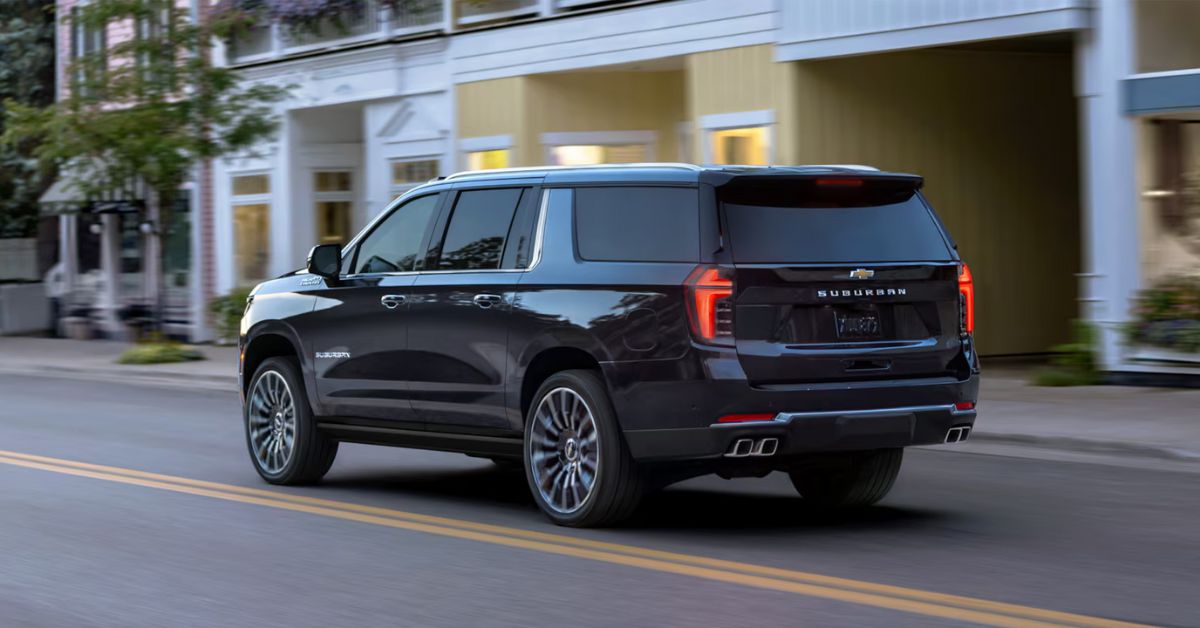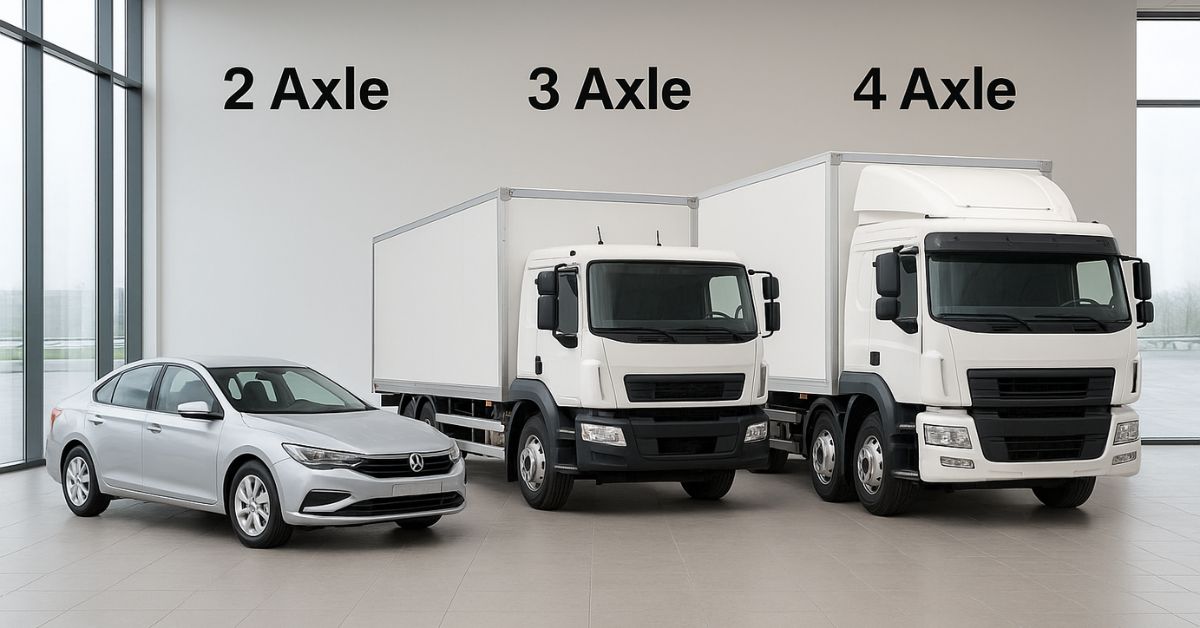What is a 2 axle, 3 axle, and 4 axle vehicle? Knowing how many axles a vehicle has helps you understand its strength, stability, and purpose. The number of axles shows how much weight a vehicle can carry and how well that weight is spread out on the road. This matters for things like what type of vehicle it is, what rules it must follow, and even how fuel-efficient it is. Whether it’s a small car or a heavy truck, axle count plays a key role in how the vehicle is used.
| Axle Type | Common Vehicles | Main Advantages | Typical Use Cases |
| 2 Axle | Sedans, Hatchbacks, SUVs, Pickup Trucks | Fuel Efficient, Easy to Maneuver, Cost-Effective | Daily Commutes, Family Transport, Light Goods |
| 3 Axle | Rigid Trucks, Concrete Mixers, Refuse Trucks, Larger Buses | Better Weight Distribution, Increased Load Capacity, Stability | Urban & Industrial Logistics, Waste Management |
| 4 Axle | Tipper Trucks, Articulated Lorries, Cranes, Heavy Equipment Transporters | Maximum Load Support, High Stability, Road Regulation Compliance | Heavy-Duty Transport, Construction, Oversized Equipment Hauling |
Understanding the 2 Axle Vehicle: The Most Common Type on the Road

Let’s start with the most common type of vehicle—the 2 axle vehicle. As the name suggests, it has two sets of wheels: one in the front and one in the back. Most of the cars you see every day—like sedans, hatchbacks, SUVs, and many pickup trucks—fall into this category. The front axle is used for steering, helping the driver control direction. In most cases, the rear axle drives the vehicle forward, but in front-wheel-drive cars, the front axle does both steering and driving.
The 2 axle setup is popular because it offers a great mix of stability, easy handling, and good fuel efficiency. These vehicles are designed to carry lighter loads such as passengers, luggage, or smaller commercial goods. Their compact size and smooth performance make them perfect for city driving, squeezing into tight parking spots, and handling everyday travel with comfort and ease.
What Is a 3 Axle Vehicle and Why It’s Used for Heavier Loads

As we move up in size and strength, we come to the 3 axle vehicle. These vehicles have three sets of wheels—one in the front for steering and two in the back. The extra rear axle allows the vehicle to carry heavier loads and helps spread out the weight more evenly. This design is commonly used in larger trucks like concrete mixers, garbage trucks, rigid lorries (where the cab and cargo are connected), and some big buses.
The added axle gives the vehicle better balance and stability, especially when it’s carrying heavy or uneven cargo. It also helps reduce pressure on the road surface and prevents damage to roads and bridges. In many cases, one rear axle provides the driving power, while the other simply supports the weight (called a “tag” axle). In some heavy-duty trucks, both rear axles drive the vehicle for extra traction, especially in rough or slippery conditions.
What Is a 4 Axle Vehicle and Where It’s Used

Now we come to the 4 axle vehicle, built for serious heavy-duty work. These vehicles have four sets of wheels—usually one steering axle in the front and three axles at the back. While you won’t see them used for everyday driving, they’re essential in industries like construction, logistics, and transport. Common examples include large tipper trucks, big cranes, heavy-duty trailers, and long-distance trucks that carry oversized or extremely heavy loads.
The main benefit of having four axles is the ability to carry much more weight while keeping the load stable and road-friendly. Spreading the weight across four axles helps reduce road damage and keeps the vehicle within legal weight limits. This setup is ideal for hauling things like construction equipment, large machinery, or even parts of wind turbines. Some of these vehicles even have steerable rear axles to help them turn more easily in tight spots, which is especially useful given their massive size.
Why Axle Count Matters in Real Life
The number of axles on a vehicle isn’t just a technical detail—it affects how the vehicle is built, how it performs, and what rules it must follow. Manufacturers design each vehicle’s frame and engine setup based on how many axles it has, to safely handle the weight and stress. For drivers, knowing the axle count is important for safe driving, especially when it comes to weight limits, braking, and turning. Governments also set specific rules based on axle numbers and total weight, which can affect speed limits, toll charges, and which roads or bridges a vehicle can use. These rules help keep everyone safe, protect roads from damage, and keep traffic running smoothly.
Summary: Why Axle Count Is Important in Vehicles
In short, the number of axles on a vehicle plays a big role in how much it can carry, how stable it is, and what it’s meant to do. A 2-axle vehicle is great for everyday use and personal travel. A 3-axle truck is built to handle heavier loads, and a 4-axle vehicle is made for the toughest jobs like moving huge equipment. Each setup has its own purpose and is an important part of how transportation works around the world.

